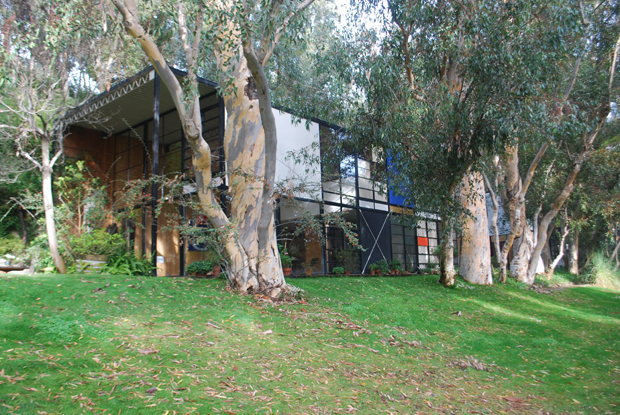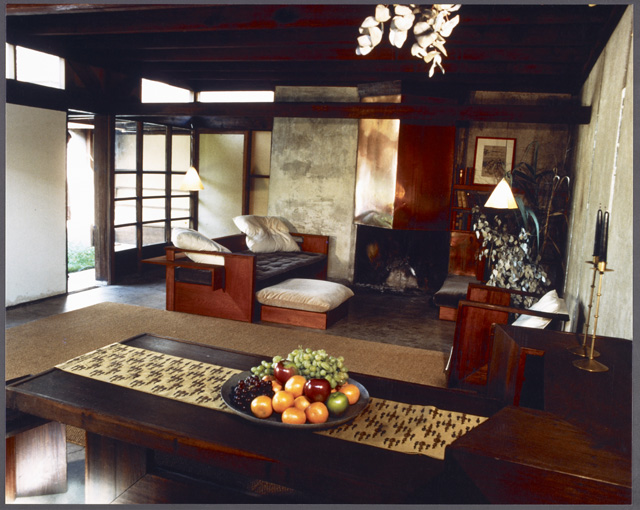
Sydney Opera House in Sydney, Australia, designed by Jørn Utzon in 1973. Recognized as a masterpiece of 20th-century architectural design, the opera house was inscribed on the World Heritage List in 2007, the youngest architectural work to have earned this distinction to date. The structure is in an excellent state of repair owing to extensive conservation management planning, which is guided by a set of design principles and an overall vision for the building detailed by the original architect. Photo: Getty Conservation Institute
Despite the increased recognition that works of modern architecture such as the Sydney Opera House, Le Corbusier’s Chapel of Notre Dame du Haut in Ronchamp, France, or Mies Van der Rohe’s IIT College of Architecture campus are culturally significant and worth saving for future generations, there is still a lack of information on exactly how best to conserve these treasures. More information and practical tools are urgently needed in the field.
With this in mind, the Getty Conservation Institute (GCI) is launching the new international Conserving Modern Architecture Initiative to add to the effort.

Crown Hall at the Illinois Institute of Technology in Chicago, designed by Mies van der Rohe in 1956. Widely regarded as Van der Rohe's masterpiece, Crown Hall is one of the most architecturally significant buildings of the 20th-century Modernist movement. Photo: Getty Conservation Institute
The conservation of modern architecture emerged as a new challenge to the conservation field in the late 1980s and early 1990s as the seminal works of the Modernist movement began to reach fifty years of age—the point at which buildings typically become eligible for heritage protection. The innovative construction methods of this period, which largely abandoned traditional detailing, together with the use of new and sometimes experimental materials, pose a challenge for traditional conservation approaches and techniques, and have raised new conservation issues that don’t yet have answers.
The Getty isn’t the first to think about conserving these structures. Organizations such as ICOMOS, Docomomo, the National Trust for Historic Preservation have all helped underscore the importance of modern architecture. But the Conservation Institute feels it has a special role in this effort, institute director Tim Whalen told me a few weeks ago as we talked about the initiative.
“The GCI’s research-based initiative aims to increase knowledge for the field and develop new tools to assist practitioners to conserve the architecture of the modern era,” Tim said. “Our scientific resources and experience conducting field projects worldwide really give us a unique platform to contribute to the safekeeping of these remarkable buildings.”

Le Corbusier's Chapel of Notre Dame du Haut in Ronchamp, France, designed in 1954. Popularly known as Ronchamp, the chapel is an important example of 20-century religious architecture. It is sited high on a hill and is comparatively small, enclosed by thick walls, its upturned roof supported on columns embedded within the walls. It is a site-specific response uniquely integral with the surrounding environment. Photo: 1998. © Scott Gilchrist/Archivision Inc.
The Conservation Institute already has a strong international role in advancing the conservation of modern and contemporary art, so this new initiative builds on its scientific research abilities and conservation expertise in modern materials. It’s a natural fit. The Conservation Institute has also been working with the city of Los Angeles for almost a decade on the creation of a survey of historic resources in Los Angeles, and this new initiative complements what the city and the Conservation Institute have accomplished in that survey.
“One of the obvious findings from the survey is that the vast majority of the historic resources in Los Angeles are from the 20th century,” Tim told me. “Not a big surprise, but there are a lot of questions and problems that we hope to be able to help solve for the community here, nationally and internationally as well.”
The GCI’s work will start with identifying key research questions and issues affecting the conservation of modern architecture, and investigate and research those concerns across a wide range of building types and geographic areas, including technical, methodological, and implementation problems. The effort also will add to the literature on the field as a resource for practitioners tackling these challenges.
Of particular relevance to the Conservation Institute’s home city, Los Angeles, the first project of the initiative will be a collaboration with the Eames House, an iconic landmark of mid-20th-century modern architecture built in 1949 by husband-and-wife design team Charles and Ray Eames.

Eames House, Case Study House No. 8, designed by Charles and Ray Eames in 1949: a landmark of mid-20th-century modern architecture. Photo: Getty Conservation Institute
The Eames House, with its extensive use of glass, exemplifies the relationship between indoors and outdoors so characteristic of the architecture of this period. This, of course, creates challenges for managing the environment for Charles and Ray Eames’ unique collection of art, furniture, and objects.
With the Eames House project, The Conservation Institute team will undertake investigative work and analysis in order to understand the current condition of the house, its contents, and its setting, and assist the foundation in developing a plan for the long-term conservation and care of the house.
Interestingly, some of the contents of the house and its unique design style are currently being featured in the Pacific Standard Time exhibition California Design, 1930–1965: Living in a Modern Way at the Los Angeles County Museum of Art, through June 3, 2012.
Supported by the Getty Conservation Institute Council, the Eames House Conservation Management Plan, prepared in partnership with the Eames Foundation, will serve as a model for the conservation of buildings of the modern era, and will demonstrate the application of an international model used for traditional building types. A key component of the project also will be to disseminate the information learned for use on other similar projects locally, nationally, and internationally.
The new initiative fits nicely with the strengths of the other programs at the Getty, too. The Getty Research Institute‘s rich collections related to modern architecture provide the potential to further explore the relationship between modern art and architecture so characteristic of the era. The Getty’s iconic building, its location in Los Angeles—a laboratory for architecture of this period—and a network of experienced local professionals also add to the effort.
As a very first step in this new initiative, the Conservation Institute has undertaken the compilation of Conserving Twentieth-Century Built Heritage: A Bibliography, an extensive subject bibliography on the conservation of modern architectural materials, which you can find here under “Materials.” The GCI is currently seeking input on the bibliography’s content. If you’re a professional in the field, we’d like your help.

Schindler House (Los Angeles, California), interior, designed by Rudolph M. Schindler. Photograph by Julius Shulman, 1987. Julius Shulman photography archive. The Getty Research Institute, 2004.R.10
And, if you’re a modern architecture enthusiast, we’d love to hear from you about the places you’ve visited that really speak to you. For me, it’s the Schindler House, with its distinctly California style of design. The house is in my neighborhood and when I’m out walking, I always pause to take it in. I love the way the house and site showcase the relationship between space, light, and form.




It’s curious that many of the homes designed by Richard Neutra have survived the ravages of time, while homes designed by Frank Lloyd Wright have required substantial maintenance. Clearly the scale of these homes does not compare with the civic structures noted in the Iris, but these smaller treasures are no less important to their owners. The Getty Center bookstore has a delightful book about Richard Neutra’s work here in Los Angeles, look for it. I applaud the renewed interest in structures designed ih the 20th Century, and am looking forward to hearing about them during your Conservation lectures.